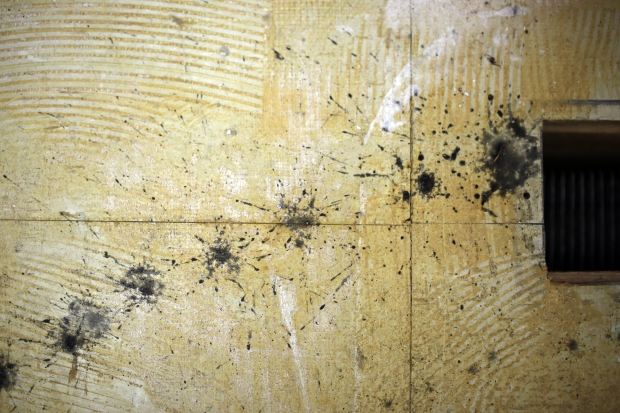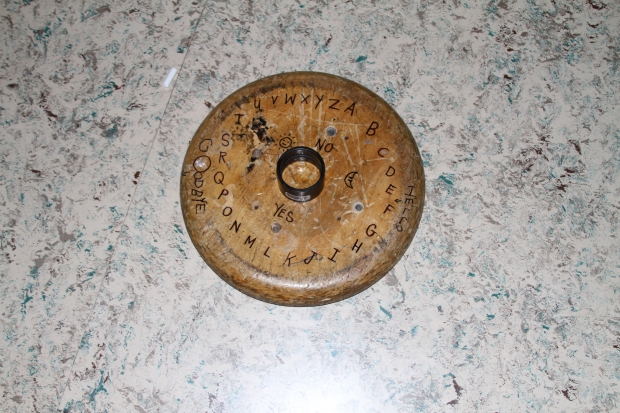ghost hunting for skeptics
A BLOG POST FROM PHANTOM WING’S WRITER IN RESIDENCE
SEPTEMBER 9, 2013 – ANDREA WILLIAMSON
////////////////////////////////////////////////////////////////////////////
One thing that is sometimes really hard to gauge is another person’s sincerity. And it’s not just in text messages or facebook posts; it’s in face-to-face interactions too. Sincere affects are often used interchangeably with ironic ones to the point where people don’t even know what they’re feeling. Perhaps it’s possible that they feel both at the same time (like an uncanny love/hate paradox this time replaced with the terms profess/deny.) This confusion and contradiction is especially true today within art works that want to declare something earnestly while maintaining a bit of critical distance. In such a world it’s difficult to locate morality. Moral absolutes become fuzzy.
While it is good to call absolutes into question, it is also important to assert beliefs and ethical standpoints. These days it seems uncouth and even politically incorrect to talk about beliefs or spirituality, even to oneself. Thinking critically, which is what we’re all taught in art school, means thinking skeptically. Can there be an unlearning, a recession, a retreat into what Western thinkers erringly call ‘primitive’ belief systems, myths, etc.?
Tonight two of the Phantom Wing artists assisted my attempt to contact and interview the ghost of King Edward School. The idea had merit as an experimental exercise in fleshing out ideas of reaching towards an ineffectual realm, a spectral and intangible realm outside of power and production. The plan was to “stage” or perform (there’s that ironic distance again) a channeling of the spirit. We would write a collaborative piece in the guise of an interview with the dead, about the theoretical place of the beyond. It was to be a theoretical exercise through the physical enacting of a spectral invocation. The plan was muddy, somewhere in between sincerity and irony. This muddiness was not addressed and it wasn’t asked where our true intentions and beliefs lay. When the three of us met at the school, there was a slight urgency and panic to discern a pragmatic approach: how do we do this and what are we actually here to do?
Luckily we were guided by Jack Bride – someone unabashedly curious about the unknown and able to appear vulnerable in the name of sincerity. We went to the fourth floor of the old part of the school, where the boy’s spirit is rumored to act out his eternal hall antics of dropping chalk, playing the piano and brushing people on the arm. The massive hallways are cloaked in darkness. We took up some borrowed bike lights. In the one classroom that was somehow open we sat on the floor with a homemade ouija board drawn onto a scavenged wooden stool top, encircled by a scattering of chalk, the most likely medium for communication.
The first session was awkward and ineffectual. The ouija board was spelling out nonsense. Stephen Mueller, our scribe, was writing a series of consonants. The ghost told us that his name was “Wobiw,” pronounced “woe-bee.”
To pursue further in our ambivalent endeavor, we moved to the third floor, where it is said the mystical piano music originates from. We found a room with a mirror that had ‘Hi’ written in chalk on it. This must be Wobiw’s room, we thought. This time we put the chalk in a pile and faced away from it in case he was a shy ghost or reluctant to be apprehended, but not known. I suggested we offer him something welcoming and calming, something that might speak across realms, some piano music. We sat in the dark, the three of us who barely knew each other, listening to Erik Satie’s Gnossienne No 1. playing on Jack’s iphone. It was calming and tangible, beautiful.
After that, in answer to every question, the ghost moved our hands in clockwise circles around the board fluidly and repeatedly. When asked if we could hear the piano music he supposedly played, the answer oscillated unceasingly between ‘yes’ and ‘no.’ He was not into words, nor into straight answers. We held a piece of chalk and he made us draw the figure eight, another perpetual movement.
I was not expecting to encounter an infinite realm, nor to be spoken to in a language entirely outside of words. But I think this is what we were secretly there to find, despite our critical thinking skills, skepticisms, and ironic cool. The ghost did exactly what it was supposed to do: it led us towards a sphere of experience outside of language, meaning, coherence, and light. It showed us that we can believe in the ability of our own systems to fail, and that there is a beyond. The three of us looking for contact with something magical. We saw ourselves, in sincere longing and vulnerability before the unknown.
Perhaps there was a contact and he is still writing through me now.







